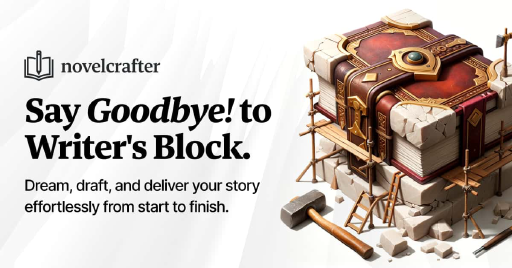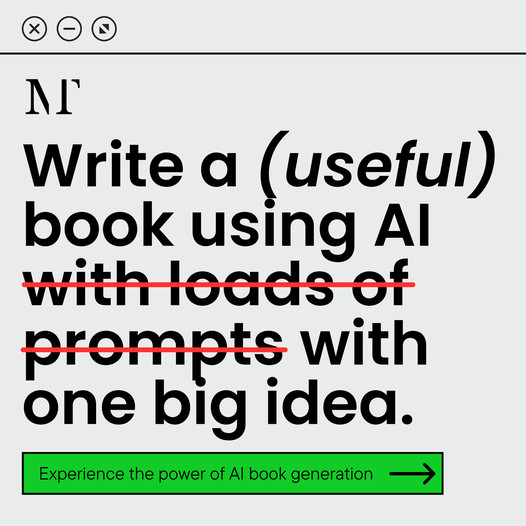Best Resources for Writers
Writing, though it can sometimes feel like solving a puzzle, gets a lot easier with the right tools. Two nifty tricks to have up your sleeve are hanging out in small groups with other writers and figuring out where each person is in their writing journey by keeping an eye on their work.
Utilizing Small Group Writing Conferences
Small group writing meetups help writers who’re in the same boat work together. It’s not all that different from ordinary conferences, but there’s a bit more elbow grease required to set the stage just right (The Literacy Loft). In these get-togethers, you can peek at what everyone’s scribbling, make some notes, and tailor future lessons to help tackle shared writing challenges.
Picture a session where you give a nod to what the group has penned, tie it to what you’re teaching, show them a trick or two, and have them practice it right away. Wrapping up with a reminder of the day’s big tip helps cement things. This casual chat vibe injects a refreshing energy into learning, making it enjoyable for everyone.
Assessing and Sorting Students in Workshops
Keeping tabs on how folks are doing is a biggie in making workshops a hit. Take a casual approach by glancing over everyone’s writing at the end of a session, matching it with that day’s lesson, or bundling folks with similar hurdles. A more straight-laced method could be whipping out a writing test before starting a new piece or unit to nicely slot folks into groups (The Literacy Loft).
A handy way to sort things out is by making three simple piles: those needing lots of hand-holding, some help, or just a gentle push. This way, you set up groups without getting tangled in the nitty-gritty. Checklists or visual aids can be a lifesaver in figuring out what each writer needs, much like lining up readers with certain strategies.
Make sure your groups can switch up on the fly, catering to the different paces at which folks improve. Ideas like “Prioritizing the Process” can be your buddy in this endeavor. This swap-when-needed grouping means each writer gets just the right kind of guidance (The Literacy Loft).
By opening doors through these small group huddles and spot-on assessments, you’re lighting the way for budding writers to make serious strides. For more pearls of wisdom on polishing your skills, check out our beginner writing tips and creative writing exercises.
Grouping Students Effectively
Group dynamics are super important when it comes to creating a buzzing atmosphere for writing. By keeping your students’ needs in mind, focusing on small group writing lessons, and fostering a community feel among your writers, you’re setting up for success.
Prioritizing Student Needs
If you want to nail down grouping students, start by figuring out what each student really needs in their writing journey. This means keeping an eye on them, seeing what they’re good at, and pinpointing where they trip up. Notice those little challenges they face? Consider using something like “Prioritizing the Process.” It’s a way to form groups based on what students need right away. And hey, groups don’t need to be set in stone; as your students get better, shake things up a bit. Curious about this process? Check out this resource.
| Grouping Method | What It’s About |
|---|---|
| Skills-Based Grouping | Put students together based on skills that need some work. |
| Interest-Based Grouping | Match students with similar writing interests to spice up motivation. |
| Mixed-Ability Grouping | Blend students with different abilities to encourage learning from each other. |
Conducting Small Group Writing Lessons
Small group writing lessons bring that extra flair compared to the whole class vibe. Here’s the usual drill for these sessions:
 What Poetry Feels Like
What Poetry Feels Like- Start by giving props to students for their good stuff.
- Tie their work to what you’re about to teach.
- Show a specific writing trick or method.
- Let them try it out on their own writing.
- Wrap up and highlight the main takeaway to seal the deal.
Having a two-way chat during these sessions can really bump up the understanding of writing concepts. Wanna go deeper? Dive into this guide for some juicy details.
Building a Community of Writers
Having a team spirit among your writers is vital for their progress. Writing conferences fit the bill here, helping students share drafts and get feedback from pals and you. This back-and-forth not only polishes their writing but also builds that sense of being part of something bigger.
Taking cues from Donald Graves, good writing meet-ups should spotlight respect, teamwork, and let the convo flow. With these in place, students start to feel like they’re part of a larger writing family. For more tips on writing meet-ups, peep at this resource.
Grouping students smartly means you’re ready to tackle their different needs and create an awesome writing community in your class.
Effective Writing Conferences
Writing conferences are a must-have tool for any writer, giving you that all-important feedback to pump up your creativity and polish your work. Learning the tricks to a standout conference and keeping discussions on track will totally level up your writing game.
Characteristics of Successful Writing Conferences
Donald Graves came up with six top-notch traits of successful writing conferences that most teachers swear by. Here’s how you can make the most of these traits when you’re in a writing conference, either as the speaker or the listener:
- Personal Touch: Make sure the conversation is about you and your writing. This way, the feedback hits home.
- Goal-Oriented: Set clear intentions for the meeting to keep things moving constructively.
- Get Involved: Join in the chatter to boost your confidence and feel more connected to the process.
- Straightforward Feedback: Good, honest feedback pushes you to grow and makes your writing sharper.
- Think It Over: Take a breather to consider what you’ve written and how you can get better.
- Cheerleading: Positive vibes help you want to keep on improving.
These are super important whether you’re just swapping thoughts with a buddy or digging deep with a mentor. For those just starting, check out our beginner writing tips.
Creating Focused Conferences
Getting the most out of writing conferences means setting up talks that really hit on what you need. These sessions can cover everything from fluffing up your story, getting opinions on plots, or fine-tuning your editing game. Here’s a quick-hit guide for what to do during these meetings:
| Focus Area | Purpose |
|---|---|
| Reacting to Writing | Get writers to open up about a buddy’s work, paving the way for constructive feedback. |
| Editing Skills | Teach how to spot areas for betterment in their work. This means grammar, flow, and style advice. |
| Narrative Structure | Chat about the order and flow of the story, ensuring the characters and drama are on point. |
Research backs having different strokes for different folks during these conferences, which suits learners of all kinds, including those learning a new language (Reading Rockets). To find more tricks and tools, check out “Best Practices in Writing Instruction” by Graham, MacArthur, and Fitzgerald (Reading Rockets).
Using these focused approaches lets you dive deep into writing conferences, giving you useful feedback and helping you grow as a writer. For more fun and skill-building, give our creative writing exercises a go to kick your writing into high gear.
Differentiated Instruction Strategies
When it comes to teaching writing, you’ve got folks from all walks—students with all sorts of backgrounds, skills, and needs. Different strokes for different folks, right? Differentiated instruction keeps learning interesting and valuable for everyone in the room, whether you’re dealing with second language learners or students at different reading levels.
Supporting Second Language Learners
Helping second language learners is vital for any writing classroom. These students might have a tough row to hoe—learning a language and polishing their writing skills at the same time. Here are some handy tips to ease their journey:
- Visual Helpers: Break out the pictures! Videos and diagrams can make a big difference, adding clarity and context to writing tasks.
- Team Spirit: Pairing up second language learners with classmates can boost their language skills. It’s like language training wheels.
- Simple Talk: Straightforward and plain language goes a long way. Ditch the fancy words and keep it simple to make communication crystal clear.
By offering a hand to these learners, you create a welcoming place where they can build up their language and writing skills side-by-side. If you’re looking for more pointers, check out beginner writing tips and writing advice for new authors.
Tailoring Instruction for Various Learners
Differentiated instruction means mixing things up for different learners in your class. Here are some ways to do that:
- Tweak the Texts: Hand out reading materials that fit the levels of various students. This means everyone can get something from the content and express their ideas easily without the reading struggle.
- Switching Partners: Group students based on skills and what they’re into. This way, writing conferences hit the mark, giving each student the focused instruction they need Reading Rockets.
- Spot-On Feedback: Give feedback that’s on point about specific parts of their writing. This guides them in honing their skills, and writing conferences can help them get better. Go ahead, challenge them to react to a piece of writing or get serious about editing for topnotch results Reading Rockets.
By applying these differentiated instruction strategies, you’re ready to tackle the wide array of needs in your writing classroom. To step up your game, dive into resources like how to improve writing skills or creative writing exercises that cater to everyone.
Crafting a Professional Portfolio Website
Getting your portfolio website on point is super important for sharing your writing skills and drawing in future clients or publishers. Let’s dig into the essentials of building a killer portfolio and check out some top platforms for hosting it.
Key Considerations for Portfolio Websites
When setting up your portfolio site, there’s some key stuff you’ll want to keep an eye on:
- Easy Navigation: You want folks to find your best stuff quickly. Keep it neat and simple so they’re not getting lost.
- Mobile-Ready: Make sure it looks good on a phone or tablet. A responsive design means anyone can check out your site on their favorite gadget.
- Best Foot Forward: Show off your top-notch pieces. Pick those gems that really show what you’re all about.
- About Me: Toss in a short bio so they get a feel for who you are and your writing chops. It’s all about making that personal vibe.
- Easy Contact: Make sure you’ve got clear contact ways or a form so people can easily hit you up.
- Keep it Fresh: Don’t let your portfolio get dusty. Update it with new stuff and ditch the oldies.
Recommended Portfolio Platforms
Here’s a peek at some great spots to host your portfolio site:
| Platform | Key Perks | Cost |
|---|---|---|
| Squarespace | Intuitive builder, slick templates, anytime help | From $12/month |
| Journo Portfolio | Custom themes, multimedia action, analytics baked in | Free option; upgrades starting at $15/month |
| Authory | Auto content grabs, forever backups, easy templates | 14-day free trial; plans from $8/month |
| Muck Rack | Build portfolios, job alerts, digest stories, tracks performance | Pricing varies; premium goodies available |
| Clippings.me | No-hassle setup, wide file support, Google Analytics | Free tier; Premium at $9.99/month |
For more handy hints on polishing your writing portfolio, swing by our piece on writing advice for new authors. Having a standout portfolio can really boost your presence and street cred as a writer.
Essential Writing Guides
If you wanna spice up your writing chops, some must-reads are here to save the day. Check out Stephen King’s “On Writing” and Joni Rodgers’s “First You Write.” These reads don’t just give you the how-to; they give you the why-not too.
Insights from Stephen King
Stephen King’s “On Writing” is kinda like a one-stop-shop for writers who mean business. Packed with King’s witty remarks and down-to-earth tips, this book hits just the right note for writers of all stripes. With personal tales and a treasure chest of advice, King gives you the lowdown on the writing grind.
What you’ll get in this gem:
| Area | Scoop |
|---|---|
| Writing Mojo | King harps on setting a routine and clocking in those writing hours. |
| How to Get Noticed | No-nonsense tips on getting your work out there for all to see. |
| Finding Your Groove | A deep dive into carving out your personal writing flavor. |
King’s book is more than just a guide; it’s like having a pep talk to propel you through the challenges of writing.
Journey of a Bestselling Memoirist
Joni Rodgers’s “First You Write” gives you the inside scoop on smashing it as a bestselling memoirist. She spills the beans on her writing escapades, conquering the self-publishing scene, and finally making it big on the New York Times bestseller lists.
What she shares:
| Theme | Goodies |
|---|---|
| DIY Publishing | Rodgers lifts the lid on kicking off self-publishing ventures, especially using Kindle. |
| Writing Adventures | Her stories will push you to carve your own unique storyline. |
| Being Real | Encouraging you to keep it real, her advice helps writers share their true tales. |
Dive into “First You Write” to grab fresh outlooks and tips you can really use to crack the code of writing and publishing today.
Both books are like writer’s gold mines in the best resources for writers. Whether it’s mastering the basics or charting your own writing journey, these reads will no doubt turbocharge your writing arsenal.
Understanding the Writer’s Life
Peeking into the life of a writer offers real nuggets of wisdom, especially if you’re dreaming of sharpening your writing chops. This part digs into what makes a writer tick and points out some must-read books that’ll light a fire in both rookies and veteran authors.
Psychological Exploration of Writers
Being a writer ain’t just about putting words on paper; it’s a rollercoaster ride of emotions and thoughts. Betsy Lerner in “The Forest for The Trees” dives into the minds of different kinds of writers–from the hesitant to the naturally gifted to the who’s-always-worrying kind. Lerner mixes humor with compelling tales, painting pictures everyone can see themselves in. Her book is like a guide through the emotional chaos that sometimes accompanies creativity. If you’re curious about the mind games writers play, you might wanna check her out at Center for Fiction.
Must-Read for Aspiring Writers
If you’re starting out with a pen in hand, grab Annie Dillard’s “The Writing Life.” It gives a real-deal look at writing that blends the magic with the everyday grind. Dillard doesn’t sugarcoat the bumps and unknowns you’ll hit along the way, kind of like exploring a dense forest without a map. Her thoughts hit home for anyone trying to craft stories, making it a trusty guide for understanding both the art and hustle of writing. For more musings from Dillard, visit Center for Fiction.
Digging into how writing messes with your mind and diving into these powerful reads will make your journey as a writer richer. Wanna up your game even more? Try our beginner writing tips or dive into creative writing exercises. They’re perfect for molding your one-of-a-kind voice and style in the writing game.

 Grab my poetry book, 'we're all just wanderers in the end' Here
Grab my poetry book, 'we're all just wanderers in the end' Here AD: Your Book Finally Written...
AD: Your Book Finally Written...